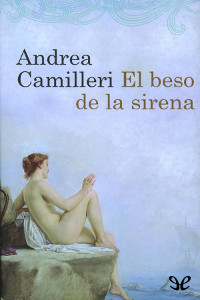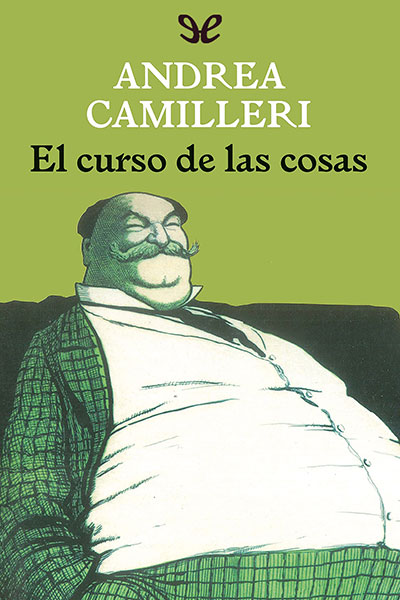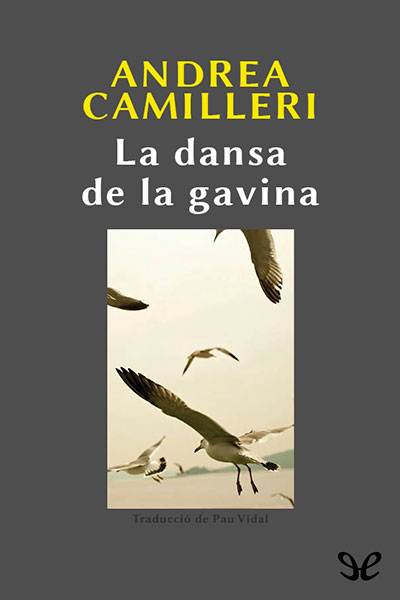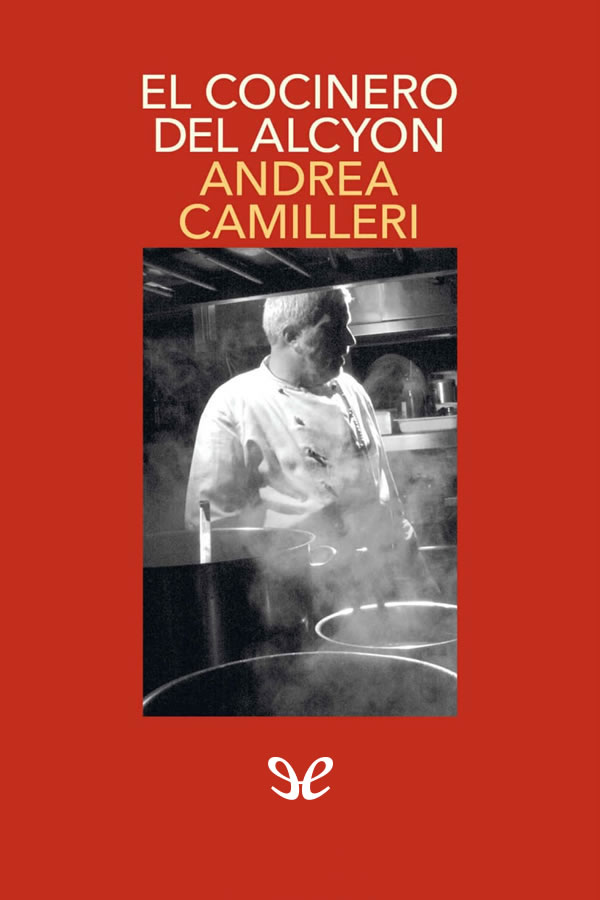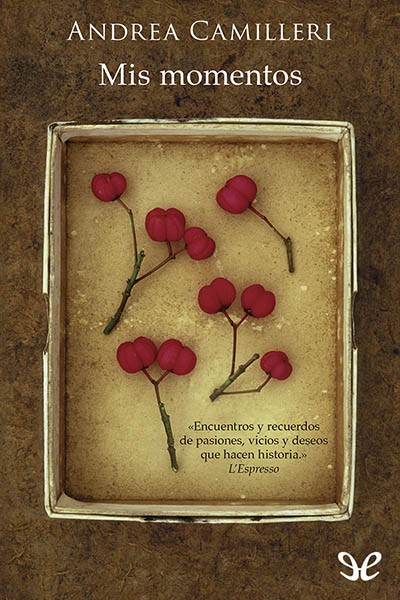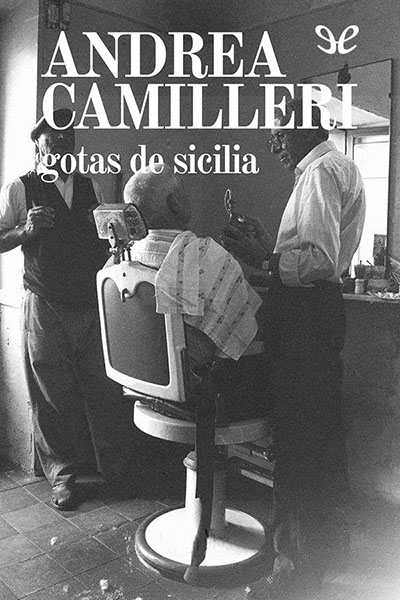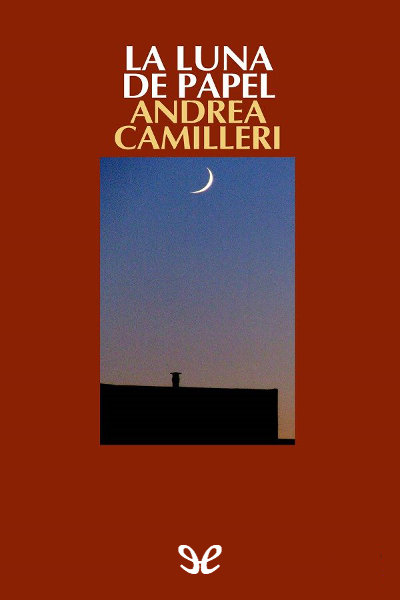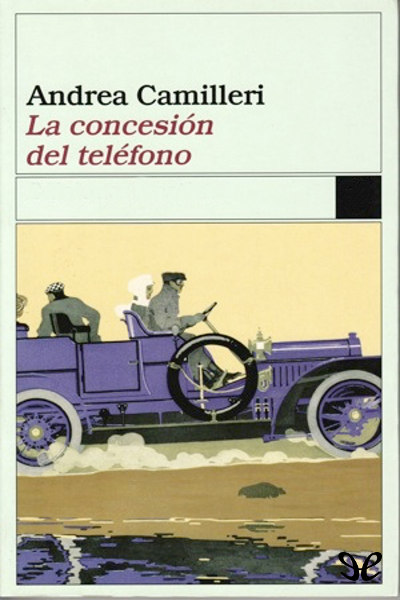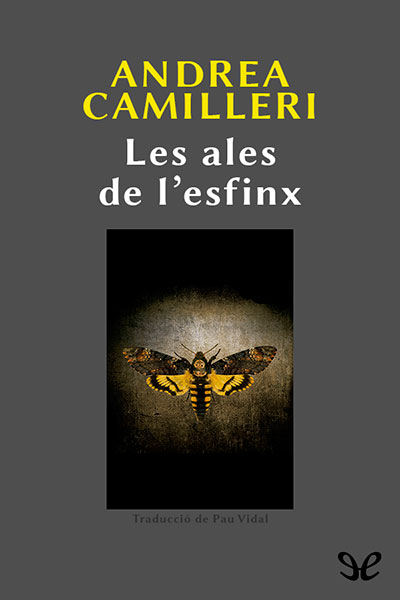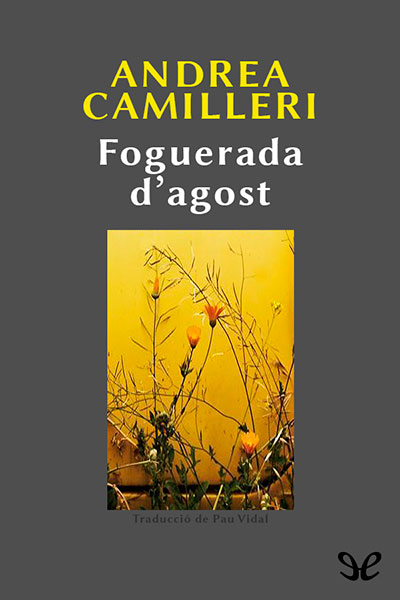oleebook.com
El primer cas den Montalbano de Andrea Camilleri
de Andrea Camilleri - Género: Policial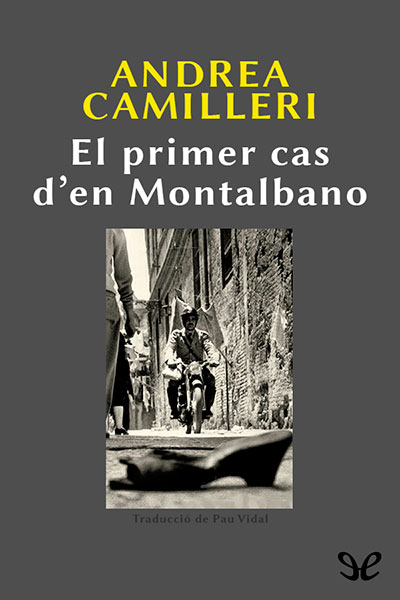
Sinopsis
Els tres relats llargs que conformen aquest volum de les aventures del comissari Montalbano no decebran ningú, ben al contrari: A El primer cas d'en Montalbano, el lector patirà una curiosa impressió, en descobrir el jove vicecomissari vivint una relació amorosa no amb Lívia, sinó amb una tal Mery, i és clar, recentment traslladat, es veurà embolicat en un afer tèrbol que comença amb una bufetada originada per una disputa de trànsit. També a Set dilluns, el comissari haurà de pensar molt per resoldre l'endevinalla que li plantegen els assassinats d'uns curiosos animals. I a Retorn als orígens Montalbano investigarà el cas del segrest fingit d'una nena de tres anys, darrere del qual s'intueix tota una trama mafiosa.
Amb el rerafons d'una Sicília plena de vida que amara tota la narració amb els seus paisatges i sabors, Camilleri regala als lectors un nou capítol de les aventures del comissari Montalbano, un personatge únic, especial i ordinari alhora, que encarna l'excepcionalitat de l'heroi i els dubtes, temors i emocions de l'home corrent.
Libros Recomendados - Relacionados
Reseñas Varias sobre este libro
I had previously read only the title story in a one story volume. (About 125 pages.)
So you can imagine that the remaining pages and other 20 stories comprises a large element of this more complete book.
The other great aspect is that we have an introduction from the author himself about his writing and how he captures his detective and what he writes.
The work of the translater, Stephen Sartarelli, also deserves special mention s he brings a real humanityto the work and where Italian doesn't quite have an English equivalent there is a glossary at the back of the book.
The interesting thing is if me you are a fan of all things Montalbano you will have come across some of these stories in the TV production: The Artist's Touch; Montalbano's Croquettes and The Goldfinch & The Cat. Plus other tales seem to have been woven into Young Montalbano's TV series.
Although police procedurals they centre on Inspector Montalbano; his frailties, lack of sleep, love of fine cuisine and literature. However, above all the stories are about his relationships with all he meets from his Lover to the people he questions and underpined by those whom he works with.
Humour abounds and there are running jokes in his work. A loathing for paperwork, Caterella's incompetence from mispronouncement of people's names to banging the Chief's door and the frustration Montalbano has for his seniors.
This is an excellent collection to revise your joy and love of Camilleri's writing or to become hooked upon these stories for the first time. There are so many books to discover and explore a new reader will be in fiction heaven.
For me #20 now beckons - who ever said reading wasn't any fun?
own previously-read16 s Ellie Spencer (catching up from hiatus)280 344
I absolutely adored this collection of short stories. I have been reading the Montalbano series and just finished number 9 (the paper moon) before starting this book.
So far, this is my favourite book of Andrea Camilleris. I found myself not wanting to put it down!
My absolute favourite stories were seven mondays and Montalbano says no. But I throughly enjoyed them all.
The writing was exquisite and I often found that I was completely lost in the story.
Im looking forward to starting book number 10 (August heat) in the Montalbano series!favorites13 s piperitapitta993 389
Non è vero che il primo Montalbano non si scorda mai!
...infatti lo sto rileggendo perché non me lo ricordo proprio :-)
Premesso che l'ho letto veramente male, nei ritagli di tempo e soprattutto interrompendolo in momenti nei quali avrei voluto proseguire nella lettura, Montalbano è sempre una garanzia ed è piacevole andare a scoprire com'era prima di arrivare a Vigàta o appena insediatosi fare la conoscenza di Fazio e Catarella; anche in storie meno coinvolgenti - si tratta di un libro di tre racconti - riesce ad inanellare delle piccole perle, come questa:
"Si può mangiari?" spiò a un cammareri coi capelli bianchi che, sentendolo trasire, era nisciuto dalla cucina e lo tagliava.
"Non c'è bisognu di pirmissu" arrispunnì asciutto l'altro. S'assittò arraggiato con se stesso per la domanda cretina.
"Abbiamo antipasto di mare, spaghetti al nivuro di siccia, o alle vongole o ai ricci di mare."
"Gli spaghetti ai ricci di mare bisogna saperli fare" fece dubitativo Montalbano.
"La laurea in ricci di mare mi pigliai" fece il cammareri.
Montalbano avrebbe voluto mangiarisi la lingua a muzzicuna. Dù a zero. Dù frasi 'mbecilli so' e dù risposte intelligenti.
"E per secondo?"
"Pisci."
"Che tipo di pisci?"
"Quello che vuole lei."
"E com'è cucinato?""A secunno del pisci che sceglie.
"Meglio cucirisi la vucca."
"Mi porti quello che vuole."
12 s Jeanette3,586 698
This book is long within all the stories it holds, but I just flew through it.
Having watched the entire TV film series (actually there are 2 of them- one is called the Young Montalbano and is nearly prequel to all of these)- I could read quite quickly. In about 75% of the cases I knew the outcome because of the film versions. But reading some of these gave me conduit to passage for the under characters and all kinds of locale "eyes" and info that deepened the tales. They did for me. It also gave me some excellent and far more minutia of placements/sensibilities for/ about the two Mafia families and their "murder" count rivalry/ scored a soccer game overview. Much more than the film versions do.
These are the most Southern Italian fare in their nuance and thought process to physical movement pieces that I have ever found to read. Outside of just a few others ( Christ Stopped at Eboli)- you do not get the eye or hand messages (wordless and many paragraphs deep if that was put into words)- from most Italian fiction presently at all. There is some of the levels of effusions/ sense of emotive as in Ferrante, but it is not mired within the sources of dire or accepting of continual failures and the most simple/ base material frugal standards- that is core Sicilian. Not the silence of the unsaid and understood in the Sicilian.
These factors all exist in this set by Camilleri. And also Montalbano's independence and solitary nature fit perfectly into Vigata. Meri becomes replaced by Livia. No explanations. Well Livia does stick. And the perfect meal from the sea by the ultimate cook eaten alone is just an altar. Of course.
Some of my favorites here are more case centered than Fazio, Mimi, or Montalbano featured supreme. They let the under characters and main principles in the play outs just shine. And without explanations of an English who-dun-it type exercise with 1000 words per motive or emotion- you get it without the words at all. Possibly just the act. As in the story of the long married couple who practiced grieving. Or the girl become woman become matron who cannot ever live down her "reputation" and so solves "the gift I have never given to any man" ultimate response to her spouse. A truly Sicilian solving too. Or the one I remember most from the films- the story of the hob-nailed boots (all 50 pairs of them left in perfect leather forms and highest end soles and metal by the GI's who ditched, abandoned, had stolen, or just forgot about all that good stuff left behind in 1944-45). Why are there only 40 pairs left all these years later?
Oh I wish I could have some of those Rice Balls.9 s Cathy Cole2,112 60
This prequel to the wonderful Inspector Montalbano mystery series by Andrea Camilleri will be read eagerly by all his fans, and is a great starting point for those who have yet to read any of the books. In it, we see a young Montalbano when he first arrives in Vigata. We get to see him choosing his home. We get to see him finding all the best restaurants in which to eat and learning to work with the rest of the staff in the police station and a journalist at the local television station. We watch him take his first tentative steps as an inspector with lawyers, Mafia families, and witnesses who don't want to talk (or who want to talk too much). All the pieces are there, except for two. Montalbano has yet to meet Livia... and we get no chance to meet the delightful Catarella ("personally in person").
As a story, I rate it highly. I loved seeing Montalbano in the early stages of his career, yet there was something that bothered me, and I didn't pinpoint what it was until I'd finished reading the first chapter. The book just didn't "sound" right, and that is because it has not been translated by Stephen Sartarelli. After eleven books, Sartarelli's translation has become Camilleri's voice to me, and the difference is quite noticeable. Of course, it won't be obvious to anyone who has not read any of the other books in the series, and I will hasten to say that Gianluca Rizzo and Dominic Siracusa have done an excellent translation of Montalbano's First Case. It's just different and took me a while to become accustomed to it.
At roughly 100 pages in length, it's also disappointingly slim, even for a concise stylist Camilleri. I do value it, however, for its brief look into the earliest case of Montalbano's marvelous career, and I do recommend it to anyone who has yet to sample one of the best mystery series going.
5 s Ivonne Rovira2,081 219
The novellas title refers to Salvo Montalbanos first case after his promotion to chief inspector at Vigàta, which involves an illiterate young girl thought to have tried to assassinate a judge. But Salvo soon realizes theres much more to the case than meets the eye.
Author Andrea Camilleri packs a lot into the books 97 pages, which readers new to the series will appreciate. However, longtime fans will be amused at how the maverick Montalbano begins his tenure with his typical disregard for rules and procedures, and they will enjoy Montalbanos first encounter with the arrogant Cuffaro family, one of two crime families which run Vigàta particularly in light of the 12th novel in the series, The Track of Sand, in which the Cuffaro crime family plays a prominent role. The novella a prequel to the series will delight anyone interested in a humorous but well-thought-out mystery.
4 s Elaine Nickolan541 3
This was a bit different from other books written by Mr. Camilleri. Usually its one story line and that's it. This book was a collection of short stories about Inspector Montalbano, starting with his promotion to Inspector, and his first case. The book is filled with stories touching on different cases and highlighting some of the cast we all know and love. There were one or 2 stories that didn't appeal to me, but the remainder of the stories were quite enjoyable. It's always a pleasure when I read installments from this series.3 s Come Musica1,753 483
Il 17 luglio, in occasione del terzo anniversario della morte di Andrea Camilleri, ho deciso di audioleggere un'indagine di Montalbano (tra l'altro sono una fan sfegatata della serie TV).
Ho pensato che per una volta potevo iniziare dall'inizio. E così ho scelto "La prima indagine di Montalbano". Ma questo non è il primo romanzo su Montalbano.
In ordine cronologico, il primo libro sulla saga è "La forma dellacqua", edito nel 1994. E qui avrei dovuto essere più sagace. Ma conoscendo un pochino Camilleri, davvero avrebbe mai potuto pubblicare il primo libro intitolandolo "La prima indagine di Montalbano"?
Usando una frase del libro che mi ha fatto morire dal ridere, potrei rispondere a questa domanda con le parole di Camilleri: MPC Gli venne un pinsero goliardico: l'unico significato che poteva dare a quelle tri consonanti messe in fila era: MANCO P'O' CAZZO Appallottolò il foglio, lo gettò a terra, si andò a corcare più confuso che pirsuaso.
La raccolta di racconti "La prima indagine di Montalbano" è stata pubblicata nel 2004 per colmare un po' dei buchi narrativi relativi agli esordi di Montalbano. La raccolta è composta da tre racconti lunghi: Sette lunedì, La prima indagine di Montalbano, che dà il titolo alla raccolta, e Ritorno alle origini.
Nell'audioleggere questo libro se da una parte ho riso un sacco (Camilleri è esilarante) dall'altra "mi figuravo" i personaggi della serie TV.
In tutte e tre le indagini, il giovane Montalbano deve scegliere l'angolazione giusta per risolvere il caso, perché le cose non sono come appaiono; un po' come quando si siede sulla veranda per vedere l'alba spuntare:
Andò ad assittarsi nella verandina. La nottata era tiepida, non c'era una nuvola. Si mise a taliare un punto del cielo che lui sapeva.
Proprio in quel punto, da lì a qualche ora, il principio della luce del giorno avrebbe cominciato a farsi largo in mezzo allo scuro.
Anche nella seconda indagine, ha l'impressione di stare sbagliando tutto
Aviva la sensazione fastiddiosa di stare sbagliando tutto, ma non arrinisciva a capire indovi stava l'errore.
O forse l'errore stava propio nel suo modo di portare avanti l'indagine: si sentiva come chi si mette a fare il morto sull'acqua di mare e avverte che una leggera corrente lo sta trasportando. E allora, inerte, a quella corrente s'abbandona.
Da questi tre racconti emerge l'amore di Camilleri per la sua Sicilia e anche un messaggio imperniato sulla legalità: non tutta la Sicilia è mafia e omertà. In Sicilia ci sono le persone oneste che si ribellano quotidianamente alla mafia con le loro azioni sotto il segno della legalità e della legge.
Scrive Andrea Camilleri nella nota finale: Queste tre indagini del commissario Montalbano, scritte in periodi diversi, e lo si vede dalla scrittura, hanno un elemento in comune: non sono imperniate su delitti di sangue.
Non c'è un morto, in queste pagine. È una scelta voluta (e anche un rischio voluto), ma il perché io stesso non so spiegarmelo fino in fondo. Forse una specie di rigetto. Del resto i morti ammazzati, nelle mie storie, sono sempre stati un pretesto.
I tre racconti sono inediti. Solo per uno di essi ho parzialmente utilizzato un mio scritto apparso su "Micromega", n. 2, del 2002.
C'è da aggiungere che i personaggi di queste tre storie, i loro nomi (soprattutto i cognomi!) e le situazioni nelle quali si trovano e agiscono sono frutto della mia fantasia.4 s Libros.olvidados120 44
(Reseña conjunta con el libro Un giro decisivo)
¿Cuánta melancolía, cuánta soledad escondía detrás de aquella aparente alegría de vivir?
Hoy os traigo mis dos últimos libros de Camilleri, que en la edición de bolsillo son el número 10 y 11: Un giro decisivo es novela y me ha hecho sentir tantas cosas que se ha convertido en uno de mis favoritos hasta la fecha. El primer caso de Montalbano son 3 relatos largos, los dos primeros me han gustado más que el último (prefiero aquellos donde la mafia se queda en segundo o tercer plano).
Autor del comentario:
=================================
